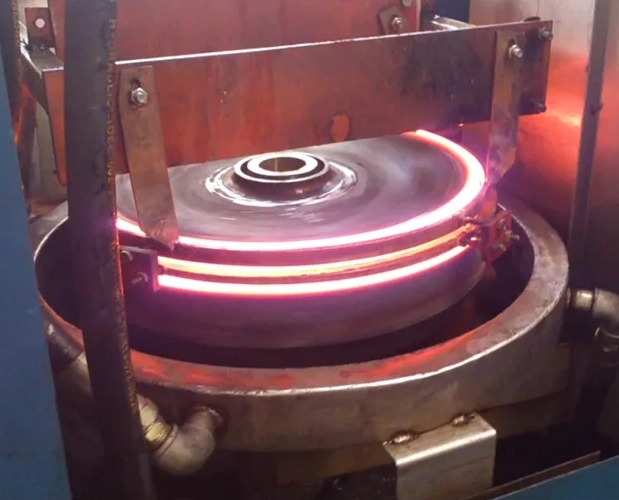- 27
- Jun
The difference between high frequency quenching equipment and laser quenching
The difference between high frequency quenching equipment and laser quenching
1. The depth of the high-frequency quenching equipment is different according to the shape, component composition, size and laser technical parameters, and the general size is between 0.3~2.0mm. It can quench the journals of large shaft parts and the tooth surfaces of large gears without changing the surface roughness, and it can meet the needs of practical working conditions without subsequent machining.
2. Laser quenching is to harden the surface of the material. The laser is used to heat the surface of the material above the transformation point. As the material cools, austenite is transformed into martensite.
Laser quenching has high quenching hardness (generally 1-3HRC higher than induction quenching), uniform hard layer, small deformation of workpiece, simple operation of heating layer depth and heating track, no need to use induction coil, and no need to be subjected to chemical heat for the processing of large parts Constraints on the size of the furnace during disposal. Moreover, we can ignore the deformation of the workpiece after laser quenching. Laser quenching is especially suitable for surface treatment of parts that require high precision.
Laser quenching has fast cooling speed and high power density. It is a cleaning and fast quenching technology without the use of cooling media (oil, water, etc.).
- The high-frequency quenching equipment has better wear resistance, deeper hardening depth and higher hardness than the laser quenching layer. The disadvantage of this technology is that the surface roughness of the workpiece is damaged to a certain extent, and it generally requires subsequent machining to recover. The high-frequency quenching machine can be used to strengthen the appearance of wearing parts in the following industries: petrochemical, mechanical and metallurgical industries. It has good effects and has achieved good social and economic benefits.

